4 Days Lhasa City Sightseeing with the Locals
Tour Route: Lhasa

 Tour Code: TB-A1
Tour Code: TB-A1
 Tour Type: Join-in Small Group Tour (Min 1 to Around 12) i
Tour Type: Join-in Small Group Tour (Min 1 to Around 12) i
- Guaranteed Departures: Our tour dates are fixed, ensuring each departure is guaranteed.
- Flexible Scheduling: If you can't find a date that suits your travel plans, no need to worry. Simply let us know your preferred travel time, and we'll create a custom schedule, inviting others to join you.
- Non-shopping Experience: Embrace a non-shopping adventure with us. We promise high-quality tours, ensuring an authentic and enriching experience in Tibet.
 Tour Service:
Tibetan Local Tour Guide & Driver
Tour Service:
Tibetan Local Tour Guide & Driver
 Time to Vist:
Available All Year Around i
Time to Vist:
Available All Year Around i
- The best time to explore Mt. Everest are April, May, June, September, October, and November, offering pleasant temperatures for a comfortable experience.
- The busiest times/peak season are July, August, and October 1-8, coinciding with peak holiday seasons.
- From December to March marks Tibet's winter, an off-peak season. Despite this, Mt. Everest enjoys clear weather during these months, providing excellent visibility. It's the perfect time to witness the stunning sunset and sunrise at Mt. Everest, with lower prices making it an affordable option.
 Trip Level:
Easy Trip for All Ages i
Trip Level:
Easy Trip for All Ages i
- Our youngest client of the Mt.Everest trip is 3 months and seasoned explorers reach up to 86 years! For your well-being, if you have any health issues, we recommend consulting your doctor for expert advice.

We'll introduce you to the authentic essence of Lhasa, from iconic landmarks to local teahouses and courtyards within 4 days.

4 Days from USD568
- This price is based on double occupancy;
- This price is based on 3-star accommodation level in low season;
- This price doesn’t include the international airfare.
Overview & Highlights of this Trip
Tashi Delek! The 4-day Lhasa tour is well-crafted to soothe your nerves and will give you the quintessential experience of Tibet travel. Mingle with locals and savior the local delicacy in the tea house; soak up the vibes of air of holiness during Barkhor Kora; visit the most iconic Buddhist sites like Potala Palace and Jokhang Temple; witness the lively monk debate in Sera Monastery and go for a leisurely hike in Drepung Monastery, etc. It’s a fantasy to the real explorer.
As the most celebrated local Tibet travel agency in Lhasa, we offer you the widest range of choices for hotels to suit all pockets and tastes. You have greater flexibility for upgrading your service. Our multi-lingual and dedicated Tibetan guides will keep you entertained in high spirits and show you the door to the heart of Tibetan Buddhism. Since we are the only Tibet travel agency with offices in Lhasa, Kathmandu, and Chengdu, we can easily help you get a Tibet Permit (for free) for Tibet entry from all directions and offer viable plans for the extended tours to Nepal and other parts of inland Chinese cities.
Those fleeting moments and great memories you had in Lhasa will pave the way for your next adventure in Tibet.

Highlight 1 of this Trip: Witness Monks debate in Sera Monastery.

Highlight 2 of this Trip: Experience the daily life of local Tibetans in the traditional Tibetan Teahouse.

Highlight 3 of this Trip: Follow the ancient Barkhor Kora route around the Jokhang Temple.

Highlight 4 of this Trip: EBC Tour
Itinerary Details
Trip at a Glance
Day 1: Arrive in Lhasa
Day 2: Lhasa City Sightseeing
Day 3: Lhasa City Sightseeing
Day 4: Lhasa Departure
Day 1: Arrive in Lhasa
Arrive in Lhasa
Welcome to Tibet! Upon your arrival, our friendly guide and driver will warmly welcome you at the airport, presenting you with a traditional Tibetan white scarf called "Khata." With just a one-hour drive on the expressway (70 kilometers), the driver will take you to comfortable hotel in downtown Lhasa. After checking in at the hotel, take the time to rest and acclimatize to the altitude (3,650 meters), ensuring a good and healthy start to your journey on the plateau.
 Gang-Gyan Hotel Lhasa or similar
Gang-Gyan Hotel Lhasa or similarDay 2: Lhasa City Sightseeing
Lhasa City Sightseeing
Today, you will explore two distinctive Monastery in Lhasa, Drepung and Sera, both offering a unique insight into Tibetan Buddhism. You will visit the Buddhist halls, Buddhist colleges, and the monks' kitchen, witnessing how they engage in special debates to study Buddhist teachings.
Sera Monastery is renowned for its lively Buddhist debates,
showcasing the essence of Tibetan Buddhism. Monks employ exaggerated body language, engaging in dance-like discussions about Buddhist philosophy, demonstrating their knowledge in a spirited manner.
In the evening, the guide will accompany the group to a traditional Tibetan restaurant for a welcome dinner, marking the beginning of your journey in Tibet.
 Gang-Gyan Hotel Lhasa or similar
Gang-Gyan Hotel Lhasa or similar Breakfast,Dinner
Breakfast,DinnerDay 3: Lhasa City Sightseeing
Lhasa City Sightseeing
Today, let's explore into the treasures of Lhasa, the Potala Palace, the former residence of the Dalai Lama and acclaimed as the world's highest palace. The Jokhang Temple and Barkhor Street, the Center of Tibetan Faithboth, both designated UNESCO World Heritage Sites.
The Potala Palace, towering majestically over the red hills in the center of Lhasa, was once the religious and political center of Tibet. As you climb the 365 steps to the main building, you'll explore the Dalai Lama's former political hall, the prayer halls, and the tomb stupa. Here, you'll encounter remarkable murals and exquisite Buddha statues, showcasing the accumulated wealth and treasures of ancient Tibet.
The Jokhang Temple, revered for housing the 12-year-old statue of Shakyamuni, is considered the holiest site in Tibet and a lifelong pilgrimage destination for Tibetans. You can join the pilgrims to walk in Barkor street and experience the soul of the city. The guide will also accompany you to a local Tibetan teahouse, offering insight into the social culture.
 Gang-Gyan Hotel Lhasa or similar
Gang-Gyan Hotel Lhasa or similar Breakfast,Dinner
Breakfast,DinnerTour Cost & Schedule
| Starting Date | Price From | Booked | Book Now |
|---|
Please Note:
If you couldn’t find a tour date suitable for your travel schedule in the above form, please contact our travel experts and they will help you plan a delightful vacation to Tibet at the BEST local price.
Discount:
1.) 5% off for those booking the tour together with other two travelers (3 or 3 above in total) at the same time;
2.) 5% off for those booking the tour 3 months in advance.
3.) Please kindly be aware that the two discounts mentioned above cannot be enjoyed simultaneously.

From Tibet travel permits to local accommodations and transportation, we've got you covered. While train and flight tickets to Tibet are not included, we ensure seamless and 100% guaranteed booking for your convenience.
Your Tibet tour experience starts with us!
Price Inclusions:
- Tibet Travel Permit application service and mailing service within China
- Entrance tickets to listed attractions and activities
- Accommodation in star hotels with breakfast throughout the journey
- Transportation in a comfortable tourist vehicle with attentive and reliable driver service
- Excellent Tibetan English-speaking guide
- Welcome dinner
- Travel accident insurance and High altitude sickness insurance
- On-board oxygen supply for travel in high-altitude areas
- Exquisite Tibetan gifts and travel map
- Shuttle service between Airport/Train station and Lhasa City
Price Exclusion:
- International and domestic Transportation to and from Tibet
- Single room supplement for solo travelers who require single room
- Some Meal expenses not included in the Tour (the guide will assist in arranging and recommending meals; you are responsible for the cost)
Contact us for your dream trip now !
Enquire NowYou May Also Like:
-
4 Days Lhasa City Sightseeing with the Locals
Tour Route: Lhasa
From USD568 p.p
View Details -
8-Day Lhasa Tsetang Gyantze Shigatse Experience Tour, Everest Base Camp Tour
Tour Route: Lhasa - Gyantse - Shigatse - Everest Base Camp - Shigatse - Lhasa
From USD1669 p.p
View Details -
15-Day Mysterious Ngari adventure tours
Tour Route: Lhasa,Gyantze,Shigatse,Lhatse,Sakya,Saga,Payang,Darchen,Tsada
From USD5259 p.p
View Details -
5-Day Lhasa Essence and Nyingchi Highlights Tour
Tour Route: Lhasa,Nyingchi
From USD1439 p.p
View Details -
5-Day Essence of Lhasa and Nakchi Tour
Tour Route: Lhasa
From USD979 p.p
View Details







 View Trip Map
View Trip Map
 5.0
5.0 















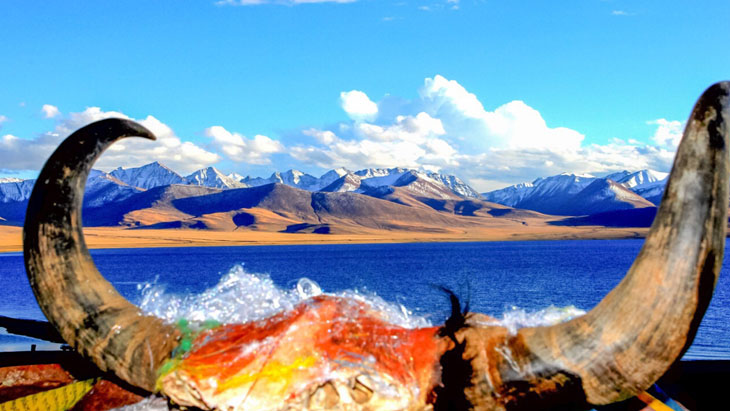


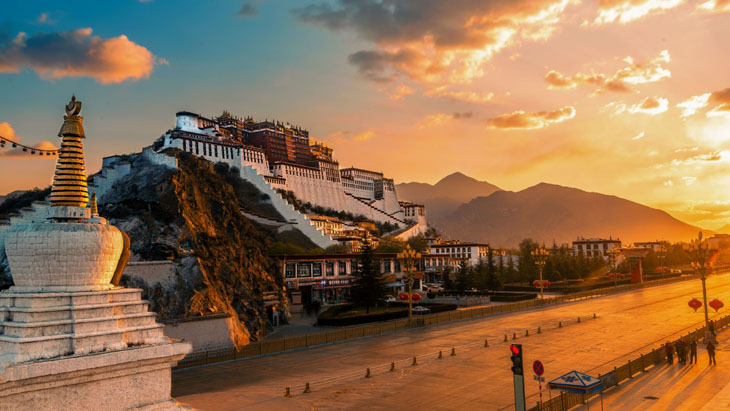
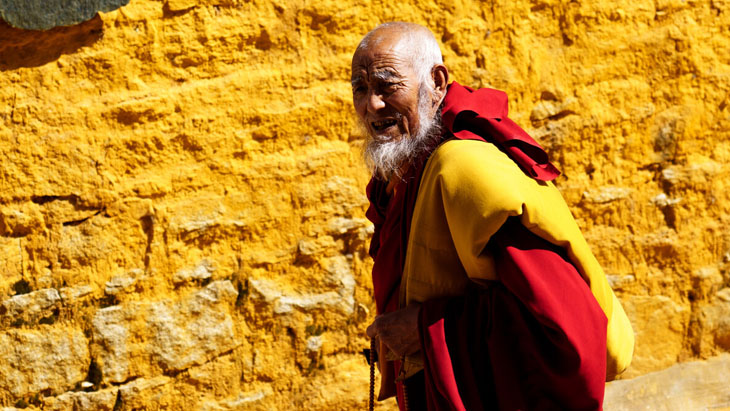



























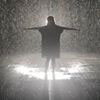
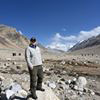















35 Comment ON "4 Days Lhasa City Sightseeing with the Locals"
Asked by Liliana Me** from Macau
plan a 7-8days trip for me and my boyfriend in April
Hi! I would like to plan a 7-8days trip for me and my boyfriend in April (3rd to 10th ideally) to Nepal, Tibet, and, if possible, Bhutan. Do you think it would be doable? Based on what I read, there are some places/things to do to consider: Nepal: Everest Base Camp trek and the Annapurna Circuit, ancient temples, sacred sites like Lumbini, Kathmandu, Tibet: The Potala Palace in Lhasa and the Jokhang Temple. eventually the holy Mount Kailash or the high-altitude plains. Bhutan: Thimphu, Paro, and the famous Tiger’s Nest Monastery. To take part in cultural traditions, yoga, meditation... Of course I am open to any recommendations you could make. For your reference, we are both based in Asia: him, in Bangkok and myself in Macau. Thank you so much for the information you could provide and, if possible, an estimated budget for your offer.
Asked by Ke** from Singapore
Cycling Tour to Mt Kailash
Hi , we are planning a Cycling Trip once Tibet opens for Tourism. The plan is we shall arrive to Kathmandu , travel to the border and enter via Kerung. Can you pls send a day to day Itinerary starting from Kerung - Lake Manasarovar - Darchen - Asthapath. We shall go around Kailash on foot and resume Cycling back to Kerung. We are a Group of 6-8 persons. Thanks Pls send ur reply to Kevin
Asked by Debo** from USA
Please can you tell me the prices and dates for the Tibet Luxury Tour.
Also, could you please provide a detailed itinerary - I want to see how many hours are spent on buses/vehicles. Thank you! Deborah
Asked by S** from HongKong
Tibet Tour from HK
May I know if holding Mainland Travel Permit for HK Residents. is it also need to get the visa permit to Tibet and what is the procedure if need to apply? Thank you
Asked by Na** from USA
Is Kailash Mansarovar Trip open for Indian Passport Holder?
Is it open for Indian Passport Holder?
Asked by A** from Singapore
Enquiry on private tour
We are planning a trip from Hong Kong to Tibet during the 12th to 21st of April. We want a private tour that covers all the scenic places as well as the EBC. Please advise an itinerary along with the cost breakdown. Thanks.
Asked by Na** from Canada
We would like to take the train from Xining to Lhasa
Asked by Gr** from Canada
The "Tibet Entry Permit" should be apply
Asked by Tam** from Singapore
Sightseeing Potala Palace
Asked by Ka** from Singapore
plan to travel to Mount Kailash